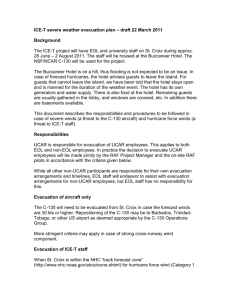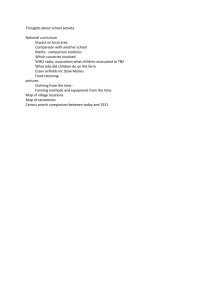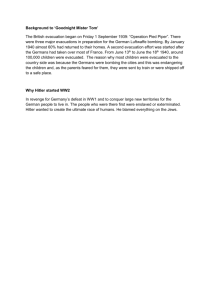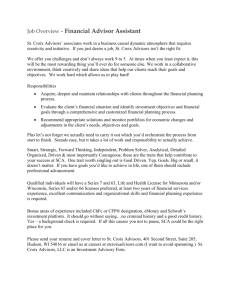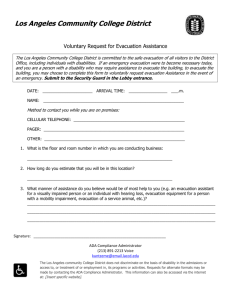PREDICT severe weather evacuation plan * draft 13 April 2010
advertisement
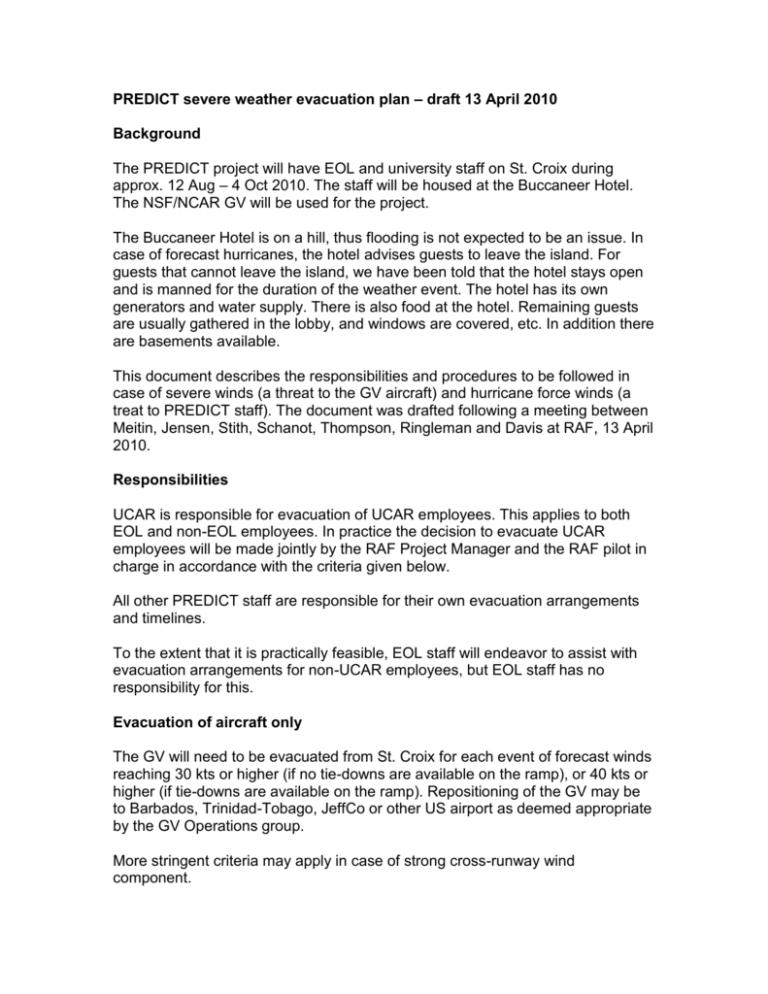
PREDICT severe weather evacuation plan – draft 13 April 2010 Background The PREDICT project will have EOL and university staff on St. Croix during approx. 12 Aug – 4 Oct 2010. The staff will be housed at the Buccaneer Hotel. The NSF/NCAR GV will be used for the project. The Buccaneer Hotel is on a hill, thus flooding is not expected to be an issue. In case of forecast hurricanes, the hotel advises guests to leave the island. For guests that cannot leave the island, we have been told that the hotel stays open and is manned for the duration of the weather event. The hotel has its own generators and water supply. There is also food at the hotel. Remaining guests are usually gathered in the lobby, and windows are covered, etc. In addition there are basements available. This document describes the responsibilities and procedures to be followed in case of severe winds (a threat to the GV aircraft) and hurricane force winds (a treat to PREDICT staff). The document was drafted following a meeting between Meitin, Jensen, Stith, Schanot, Thompson, Ringleman and Davis at RAF, 13 April 2010. Responsibilities UCAR is responsible for evacuation of UCAR employees. This applies to both EOL and non-EOL employees. In practice the decision to evacuate UCAR employees will be made jointly by the RAF Project Manager and the RAF pilot in charge in accordance with the criteria given below. All other PREDICT staff are responsible for their own evacuation arrangements and timelines. To the extent that it is practically feasible, EOL staff will endeavor to assist with evacuation arrangements for non-UCAR employees, but EOL staff has no responsibility for this. Evacuation of aircraft only The GV will need to be evacuated from St. Croix for each event of forecast winds reaching 30 kts or higher (if no tie-downs are available on the ramp), or 40 kts or higher (if tie-downs are available on the ramp). Repositioning of the GV may be to Barbados, Trinidad-Tobago, JeffCo or other US airport as deemed appropriate by the GV Operations group. More stringent criteria may apply in case of strong cross-runway wind component. Evacuation of PREDICT staff When St. Croix is within the NHC “track forecast cone” (http://www.nhc.noaa.gov/aboutcone.shtml) for hurricane force wind (Category 1 forecasted), UCAR staff will be evacuated using the following schedule: Staff will be given the choice to leave St. Croix starting 72 hours before forecast Hurricane winds at St. Croix. When St. Croix is within the NHC “track forecast cone” (http://www.nhc.noaa.gov/aboutcone.shtml) for hurricane force wind (Category 2 and higher forecasted), UCAR staff will be mandated to evacuate using the following schedule: Non-essential staff (office staff, backup staff, etc.): 72-hours before forecast hurricane wind conditions at St. Croix, the non-essential staff will start being evacuated. Essential staff (minimum crew required to prepare, conduct and recover from research missions): 48-hours hours before forecast hurricane wind conditions at St. Croix, the essential staff will start being evacuated. The evacuation may be done earlier than this based on advice from the PREDICT PI science team. Primary means for evacuation will be using commercial air services, if at all possible. PREDICT operations staff will closely monitor availability of commercial flights whenever a storm threatens. If commercial air services are not feasible, then either a charter aircraft or the GV will be used to evacuate UCAR staff. Note that this is subject to pre-project approval from NSF (TBD). EOL staff will document the fact that no normal commercial air services are available. Evacuations using the GV will not be attempted if this puts the aircrew or aircraft at risk. Evacuation using the GV may be done to pre-planned locations in Barbados, Trinidad-Tobago, the US mainland, or to any other location that the flight crew deem viable. RAF pilots will investigate the requirements for flying in and out of Barbados and Trinidad-Tobago, and other RAF staff will investigate lodging and other conditions (visa requirements etc.) at these locations. In case of very severe hurricanes or rapidly intensifying systems or unforeseen circumstances, the GV may also be used to ferry non-UCAR PREDICT staff to a safe location (see above list). The RAF Project Manager will decide what staff goes on a particular GV evacuation flight.
